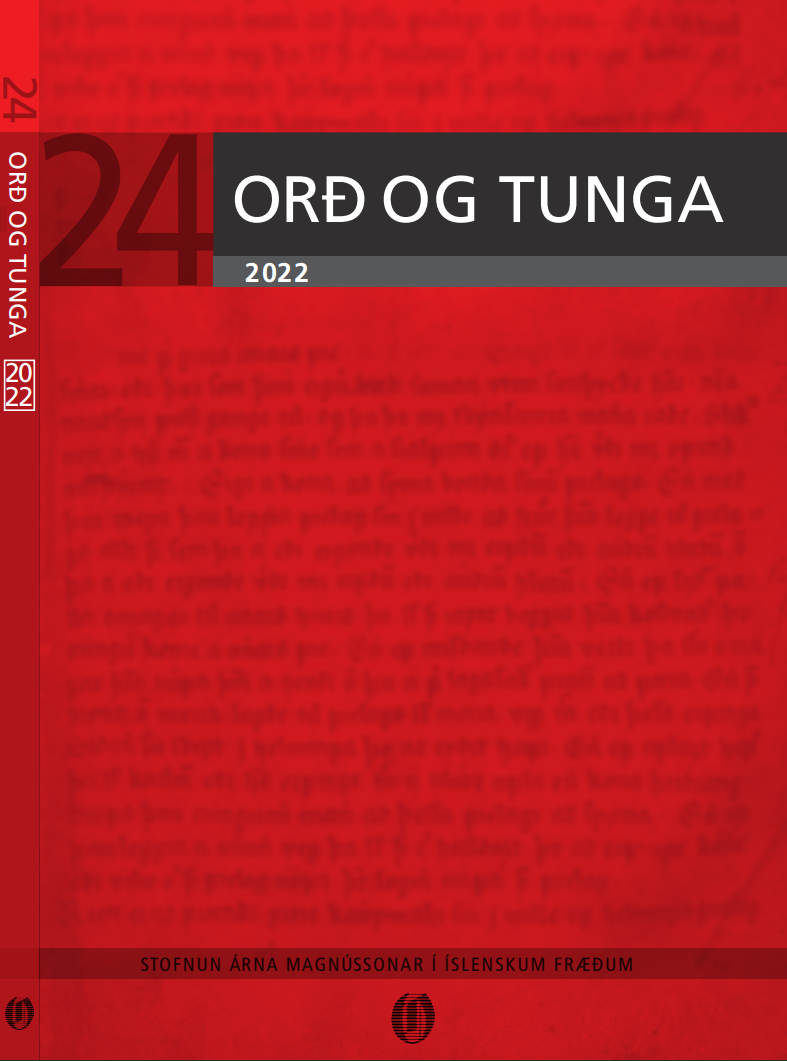& og 'og'
DOI:
https://doi.org/10.33112/ordogtunga.24.5Útdráttur
This article deals with the use of ampersand in Icelandic. The sign has a long but not continuous history in written Icelandic. The oldest documented use is in manuscripts from the 12th century (e.g. AM 674 a 4to). In contemporary language, ampersand occurs mainly in company names and titles, probably due to English influence. The author does not recommend its use and considers it an unnecessary relic.


